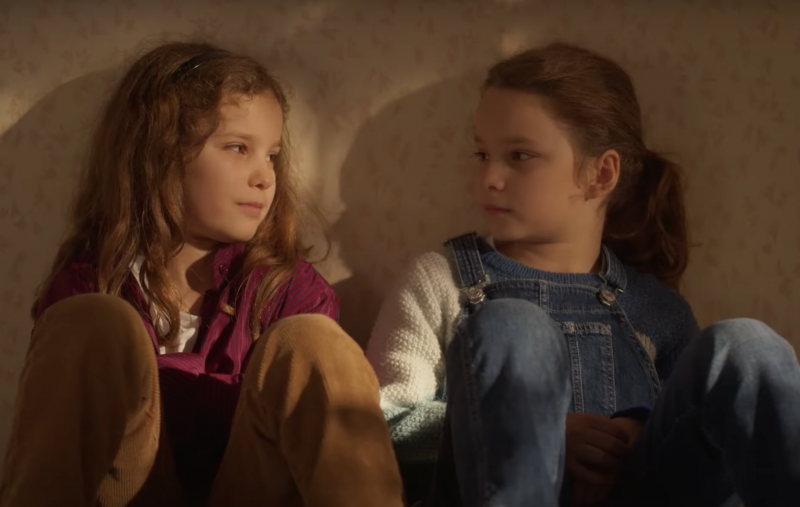Petite Maman itself plays a kind of game with the audience, and you figure out the rules as you watch. You learn to tell the girls apart based on slight differences in hairstyle and the colors that they wear. You also get to know a few of the adult characters hovering on the periphery: At one point, Nelly introduces her father to her new best friend, and if he thinks there’s anything weird about this, he doesn’t show it. Meanwhile, Nelly’s mother—the older Marion—has temporarily left the house, needing some time to herself to grieve her mother’s death.
And without a hint of didacticism, Petite Maman reveals itself as very much a movie about grief, about how a child learns to cope with sudden loss and inevitable change. It’s also about how hard it is to really know who your parents were before they became your parents. But in this movie, Nelly gets the rare chance to see or perhaps imagine her mother as the sweet, sensitive, independent-minded young girl she used to be.
Although Petite Maman is decidedly different from Sciamma’s art-house touchstone Portrait of a Lady on Fire, they’re structured in similar ways: In both films, two female characters are granted a brief, even utopian retreat from the outside world and something mysterious and beautiful transpires. If that’s not enough of an enticement, you should know that Petite Maman runs a tight 72 minutes and achieves an emotional depth that eludes many movies twice its length. It’s funny, sad, full of enchanting possibilities and over far too soon—sort of like childhood itself.
Copyright 2022 Fresh Air. To see more, visit Fresh Air.9(MDAxOTAwOTE4MDEyMTkxMDAzNjczZDljZA004))



9(MDAxOTAwOTE4MDEyMTkxMDAzNjczZDljZA004))

